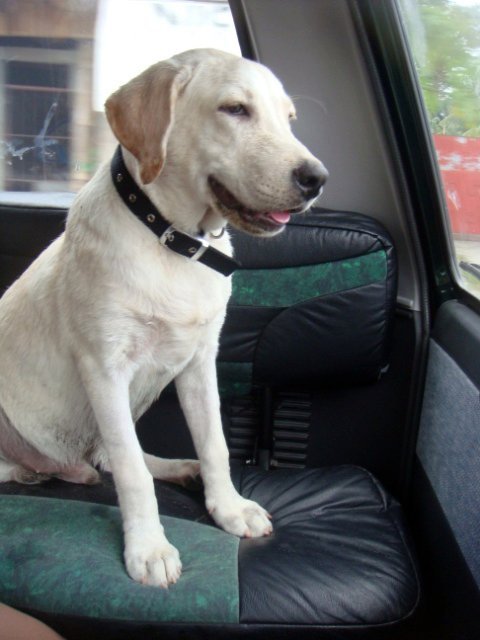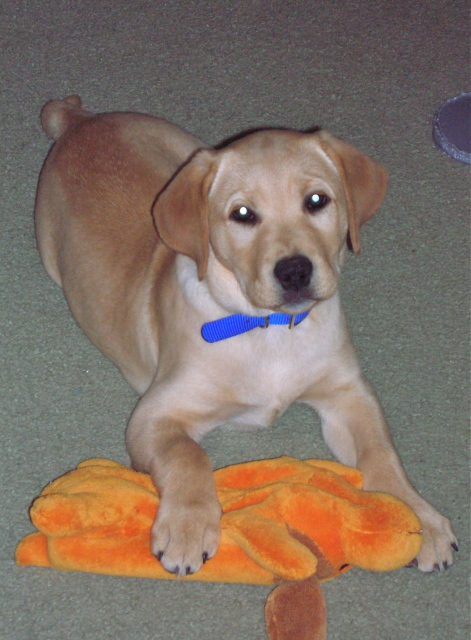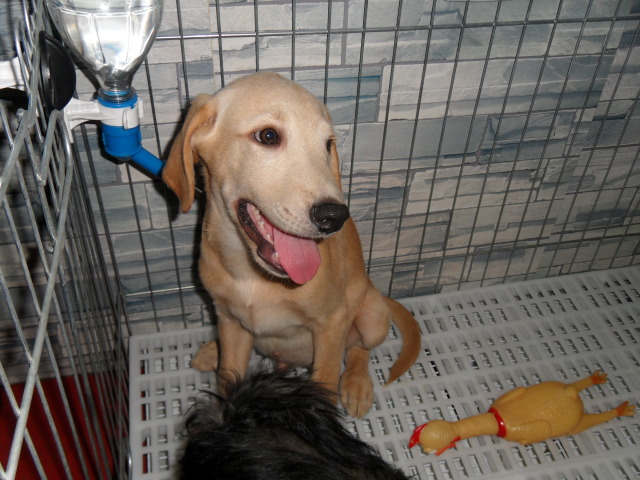QuestionThis summer I brought a new puppy into our home to join our 7 year old yellow lab. She was about 8 weeks when we got her and was catching on to house breaking really quickly due to our older lab showing her the ropes. We have them both on a feeding schedule once in the morning and once in the evening around 5pm. When she was younger it seemed about an hour after feeding she would go out to the bathroom and then she wouldnt have to go again until 5am. But know once she has gotten a little older it seems to be taking longer to process her food and is not going right after feeding and holding it until 2-3am. Now since it is the middle of the night she is making no effort to wake us to let us know she has to go out. She now goes to the bathroom almost every night on the floor where a month ago she was holding it all night. Is this due to her growing and digesting her food longer? Should we try to start crate training her now? I have grown up and raised many dogs and never had this happen before any advice would be appreciated.
Thanks
Kim
AnswerCrate training often goes better if started younger. Activity controls elimination. The answer could be as simple as walking her around at bed time to stimulate elimination. If that doesn't solve the problem, crating her may. It is possible as she matures, she is just more active at night.
It is only natural that a puppy resists its crate at first. What the puppy wants more than anything else is to be others, you, anyone else in the household, and any other pets. In our modern society, even if we are home, other things distract us from the attention an uncrated puppy must have. The only real solution is to crate the dog when you aren't around. The dog may be happier in its den than loose in the house. It relaxes, it feels safe in its den. It rests, the body slows down reducing the need for water and relieving its self. Dogs that have been crated all along do very well. Many of them will rest in their crates even when the door is open. I think the plastic ones give the dog more of a safe, enclosed den feeling. Metal ones can be put in a corner or covered with something the dog can't pull in and chew. Select a crate just big enough for the full grown dog to stretch out in.
Leave it some toys. Perhaps a Kong filled with peanut butter. Don't leave anything in the crate the dog might chew up. It will do fine without even any bedding. You will come home to a safe dog and a house you can enjoy.
A dog that has not been crated since it was little, may take some work. Start out just putting its toys and treats in the crate. Praise it for going in. Feed it in the crate. This is also an easy way to maintain order at feeding time for more than one dog.
The "shut the puppy in a safe room" is a fallacy. Very few houses even have a safe room. How many of us have a room with a hard surfaced floor and nothing else? Most rooms have electrical cords to chew if nothing else. In addition to destroying anything a bored puppy finds to chew, it may choke or have intestinal blockage from the pieces. I had a friend that left her dog in a "safe" room. It ate a hole in the floor covering. The safe rooms fail to give the dog the comfort of the enclosed space their instinct requires. Nor do they restrict activity extending the time the dog can go without relieving itself.
Also consider a bladder infection. If she is going out frequently, straining and dribbling a little before coming back in, the solution is antibotics from the vet.

 Dog breed
Question
Puto.
We have crossed bred dogs in the house a
Dog breed
Question
Puto.
We have crossed bred dogs in the house a
 constant puppy barking
Question
My 13 week old female yellow lab barks consta
constant puppy barking
Question
My 13 week old female yellow lab barks consta
 Is my dog a pure-bred lab?
Question
Sort of top view
Hi. I recently received
Is my dog a pure-bred lab?
Question
Sort of top view
Hi. I recently received
 shedding, size, uncontrolled around other dogs
Question
Sawyer
My 13 month old black lab is shedding u
shedding, size, uncontrolled around other dogs
Question
Sawyer
My 13 month old black lab is shedding u
 11 week old chocolate lab
Question
11 week old lab
We recently got a chocolate la
11 week old chocolate lab
Question
11 week old lab
We recently got a chocolate la